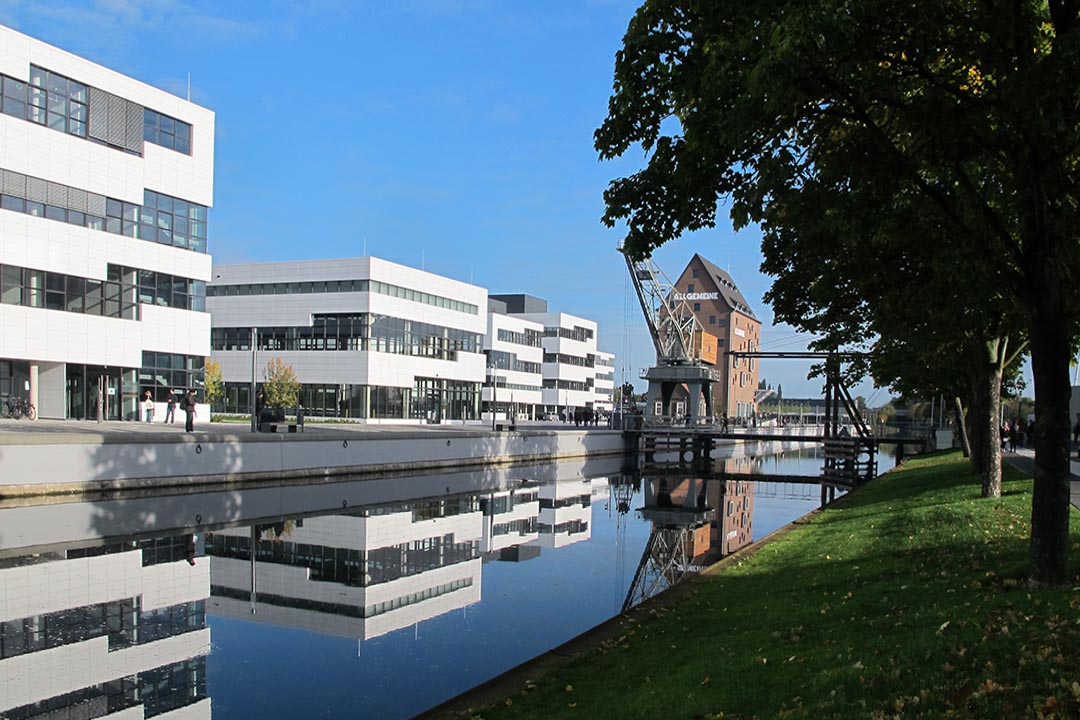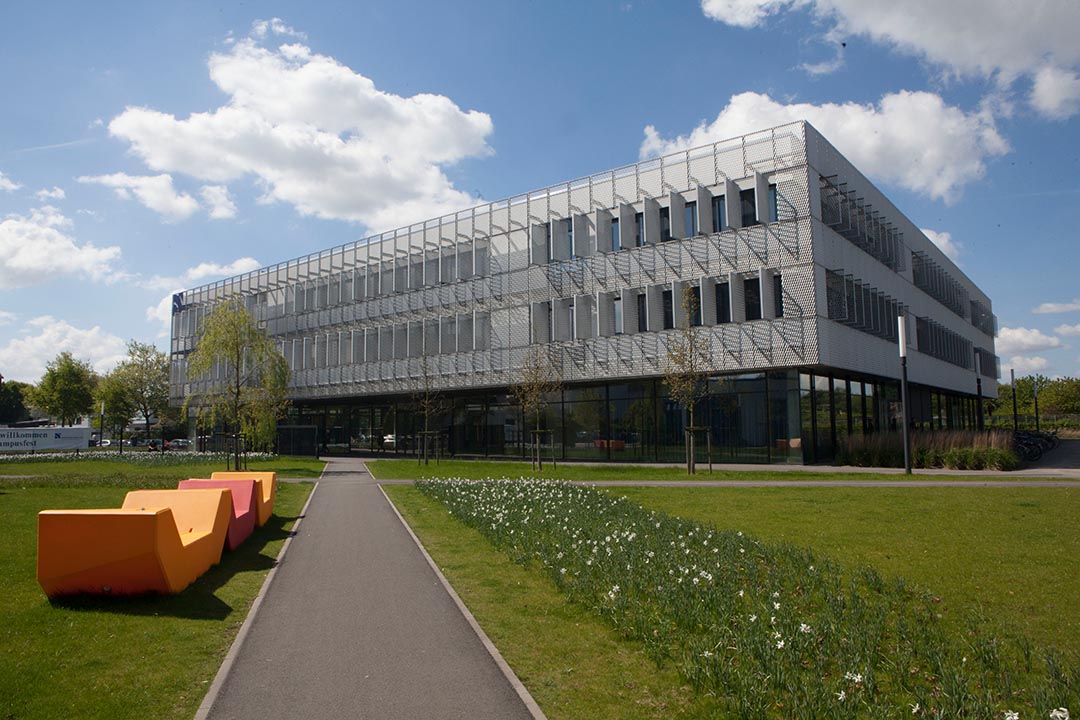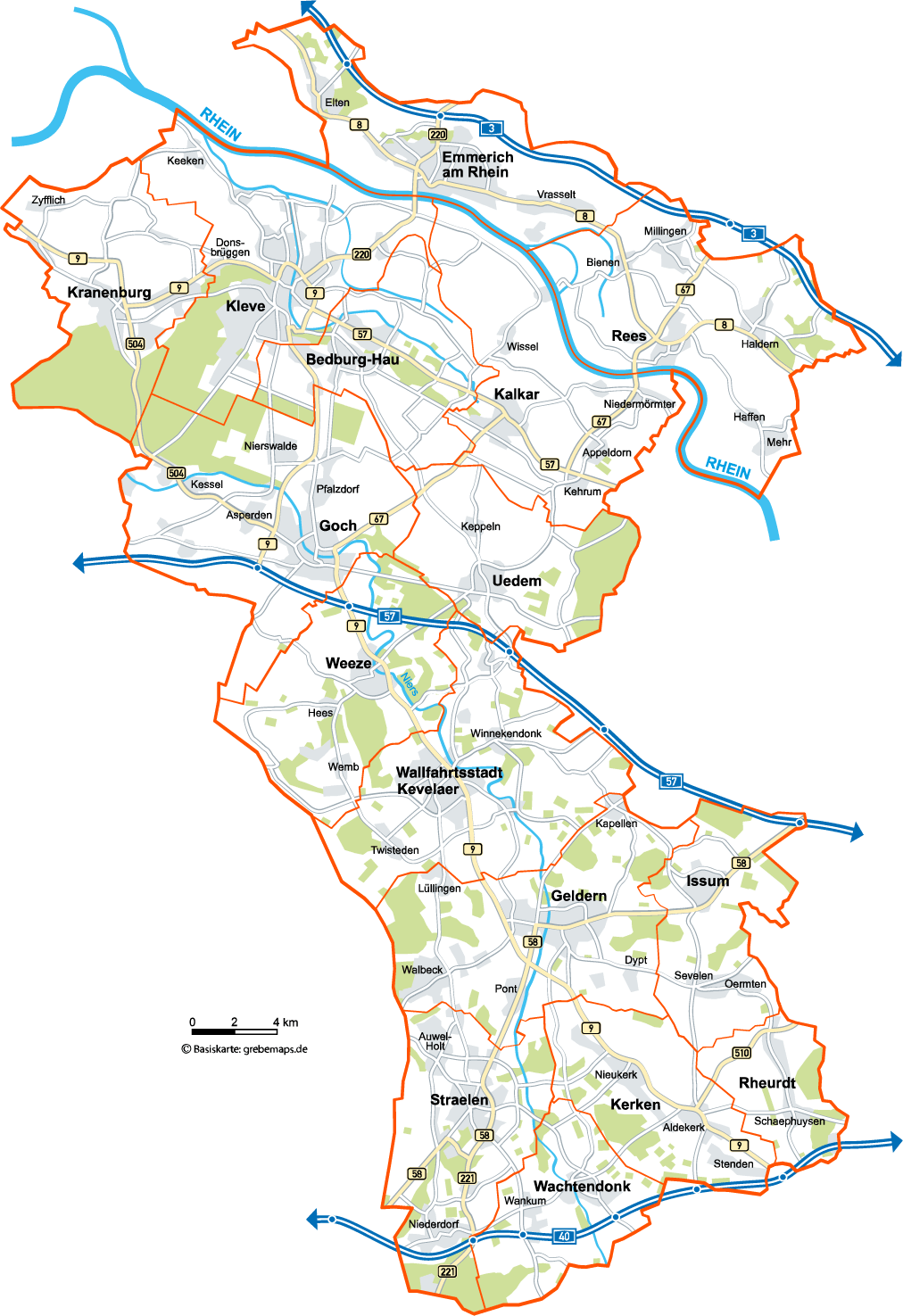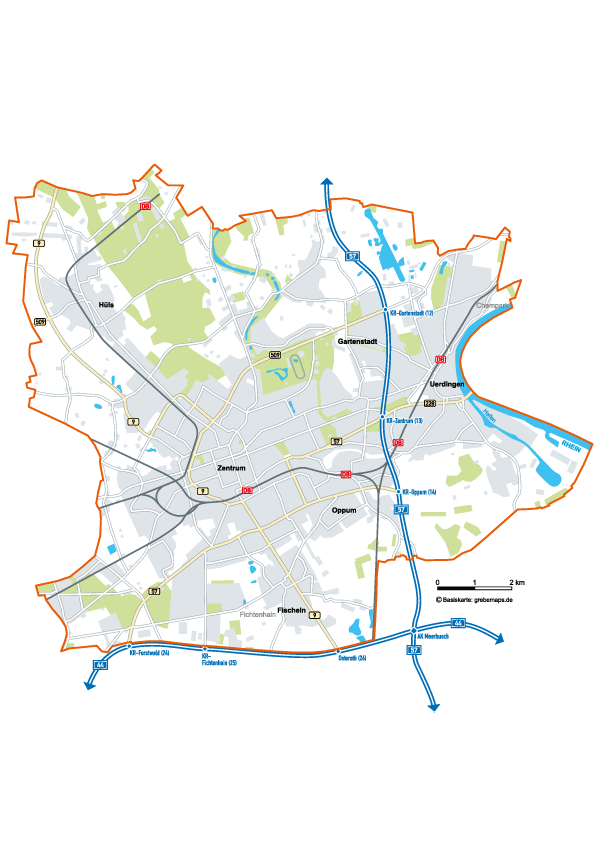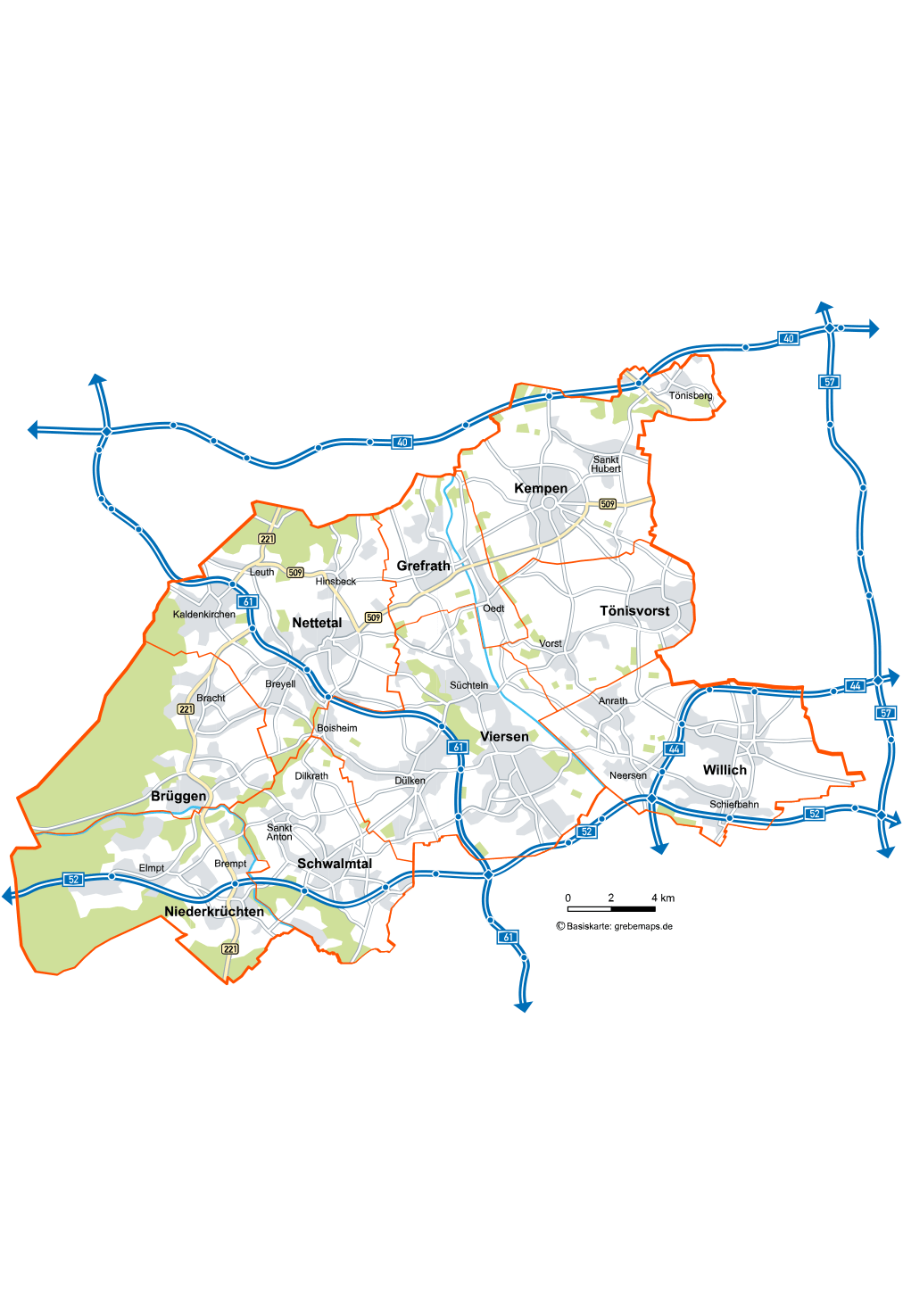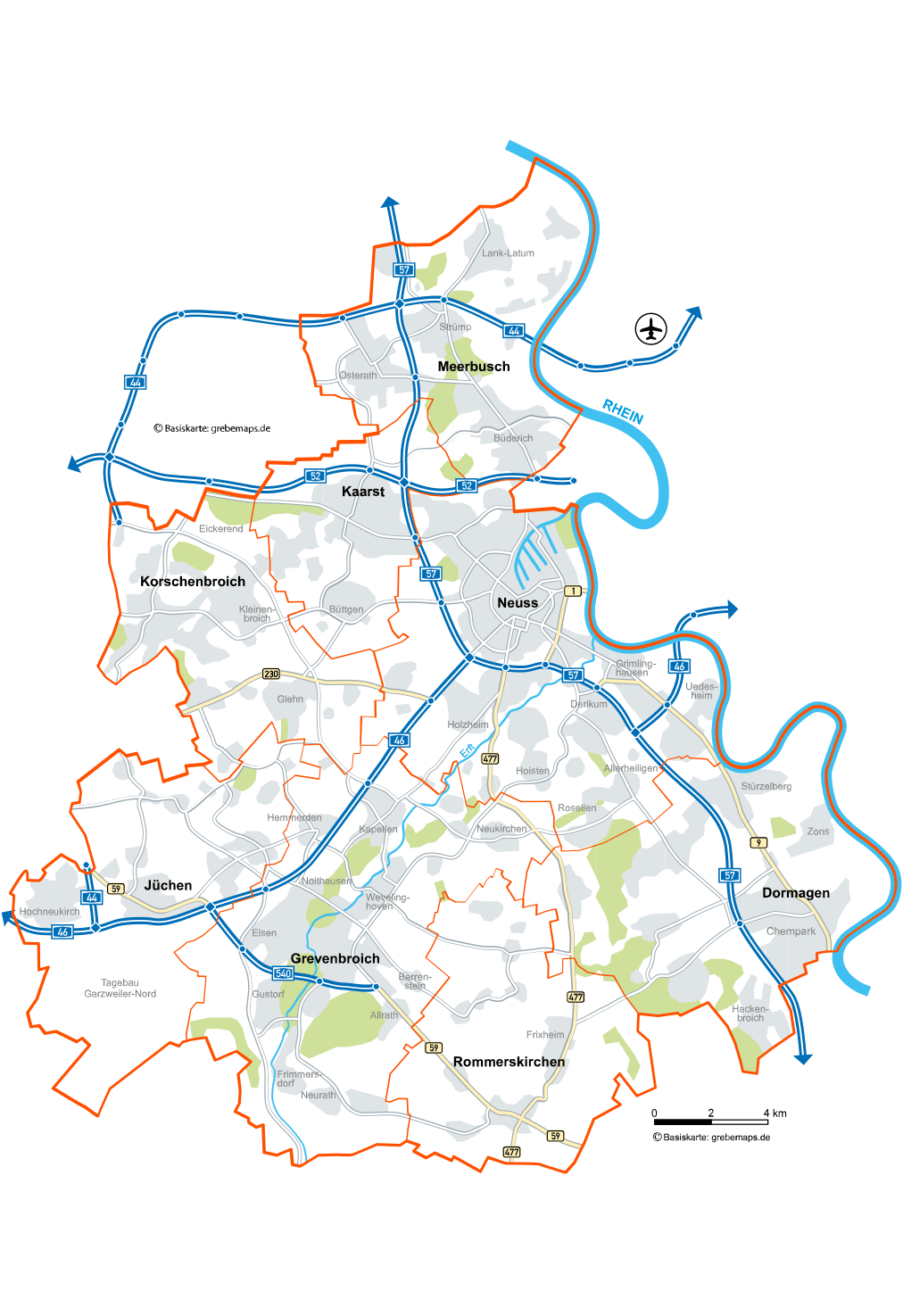Region
Diverse
The cities of Krefeld and Mönchengladbach as well as the Districts of Kleve, Viersen, Wesel and the Rhein-Kreis Neuss shape the Niederrhein Region. This important economic region west of the Rhine combines urban and natural landscapes, multimodal infrastructure and innovative industries.
The Rhine
Vein of the business boom
Numerous global market leaders and hidden champions have their German or European headquarters here. They all value the Niederrhein Region ... for obvious reasons: the close proximity to the gates of the global markets, to the state capital Düsseldorf, to the Ruhr area, to the neighbouring Netherlands as well as Belgium and Luxembourg.
“Father Rhine” is connecting everything in the Niederrhein Region, from the District of Kleve in the north to the Rhein-Kreiss Neuss in the south.

Numerous global market leaders and hidden champions have their German or European headquarters here. They all value the Niederrhein Region ... for obvious reasons: the close proximity to the gates of the global markets, to the state capital Düsseldorf, to the Ruhr area, to the neighbouring Netherlands as well as Belgium and Luxembourg.


Arts & Culture
Natural and urban lifestyles
in harmony
In some places, nature and infrastructure are worlds apart. In the Niederrhein Region, however, everything is harmoniously balanced. You can expect a lively cul-tural programme.
From Bauhaus architecture, as can be seen in Haus Lange, to traditional customs and modern cultural events: life pulsates through the entire region.
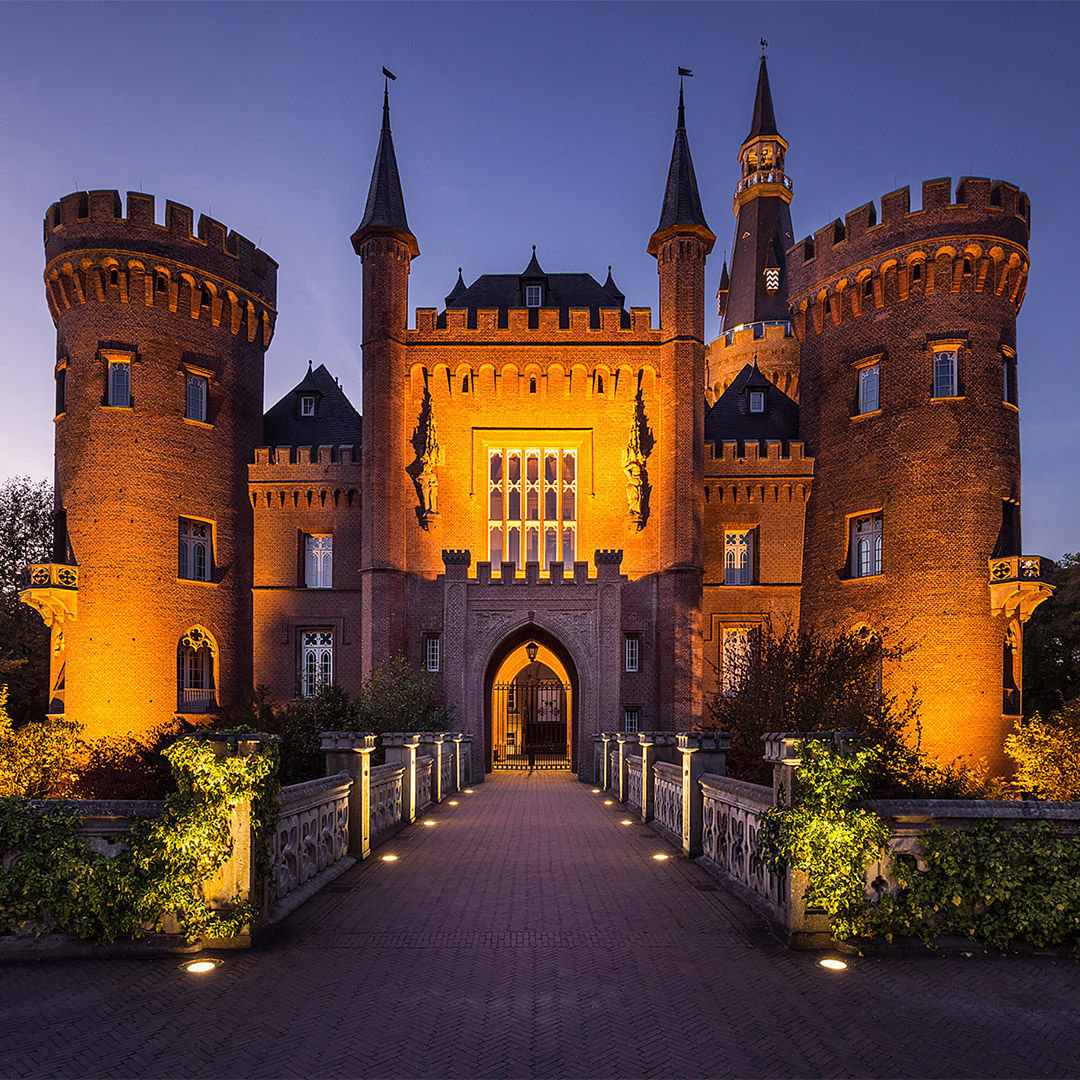
Top sports events, stadium concerts, folk festivals, and a multitude of excursion destinations that either bear witness to the Roman past or are bursting with contemporary high culture. Live and let live. Urban and natural. The Niederrhein Region has both. Plus an impressive cost-benefit ratio with a feel- good flair. Who has more to offer?

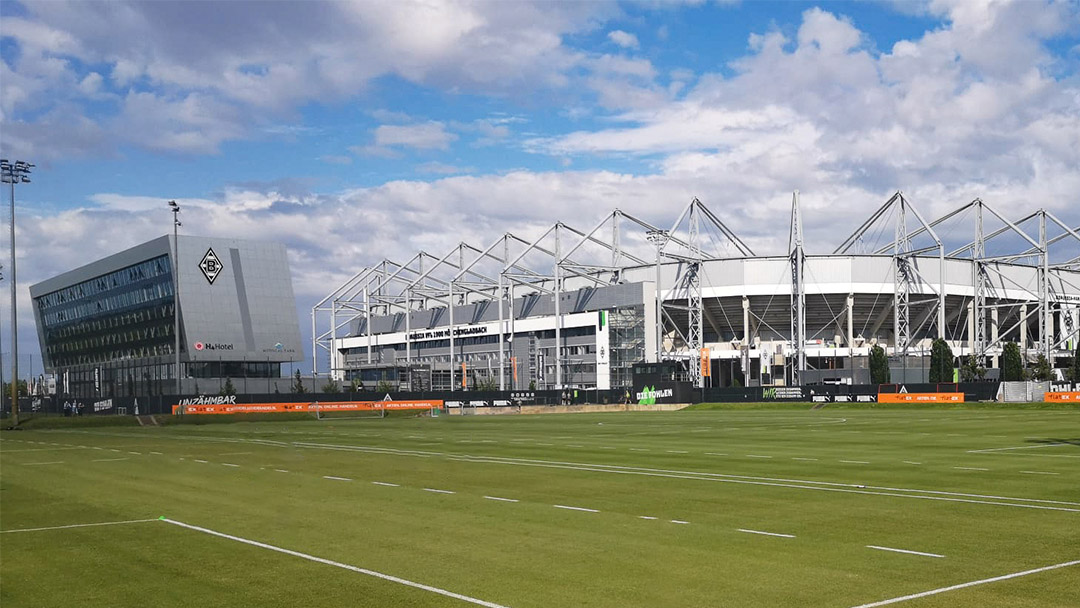
Nature
Unique nature
In addition to the cultural and urban highlights, the Niederrhein Region is also a natural phenomenon. Extensive forests and lakelands invite you to take a long walk or go cycling.
The Niederrhein Region is sprouting and flourishing more than ever thanks to its un- mistakable nature and ideal location conditions.
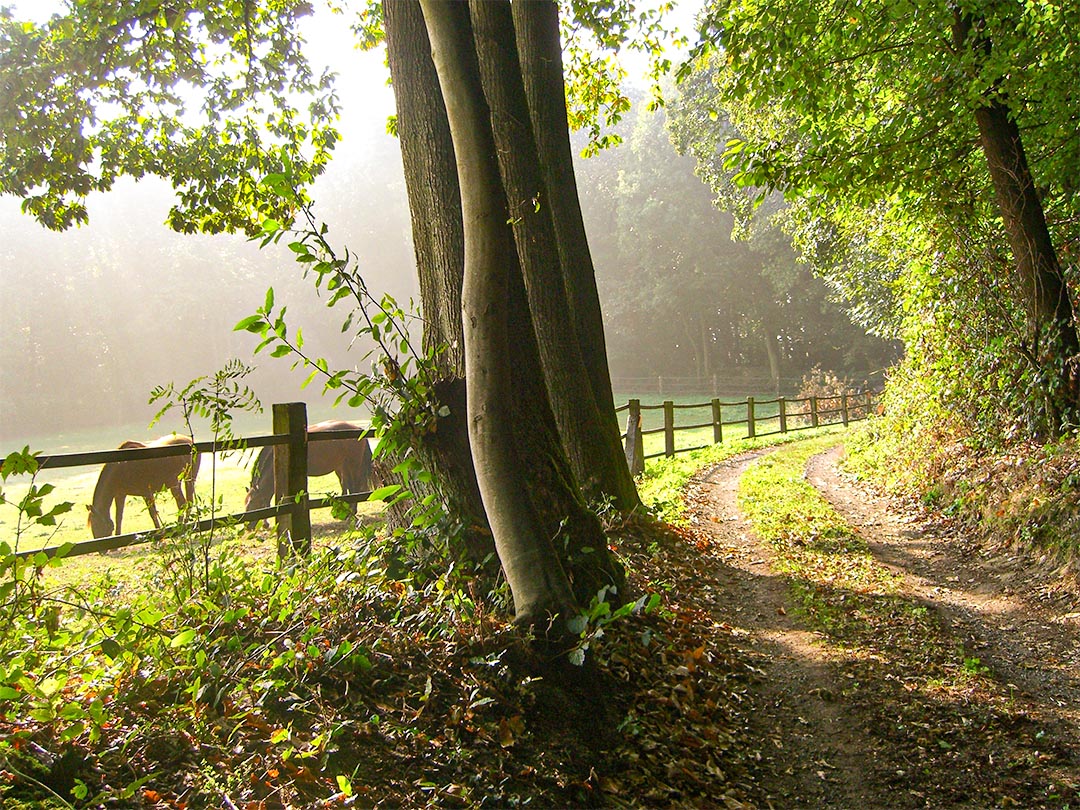
With an area of 435 km², the Schwalm-Nette Nature Park is considered one of the largest nature reserves in North Rhine-Westphalia, extending all the way into the Netherlands. This boundless stretch of nature, which is sporadically interspersed with beautiful towns, is what makes the Lower Rhine so charming and characterises the Niederrhein Region as an exceptional location worth living in.


Location
Perfect locations
and diverse range of offers
Als Lebensader und infrastruktureller Mittelpunkt des Standort Niederrhein ist der Rhein heute vor allem Verkehrsweg für Frachtschiffe mit Massengütern und Containern.
Good infrastructures, trimodal connections or modern offices – in short: top conditions for industry and business.

Eight inland Rhine ports, some with trimodal connections, are the hubs for goods handling and raw materials logistics. There are also additional special berths for the three chemical parks in Dorma- gen, Krefeld-Uerdingen and Rheinberg. A dense and efficient Autobahn network ensures the necessary transport infrastructure for many companies. The Autobahns cross the German-Dutch border from the Niederrhein Region no less than five times. The two major airports Düsseldorf Airport (DUS) and Cologne/ Bonn (CGN) are among the top ten airports in Germany. There is a wide range of industrial and business land available in the Niederrhein Region. The revitalisation of brownfield sites for flexible office and manufactur- ing locations is considered exemplary.


Science
Knowledge region
in full swing
With around 14,000 students, the Niederrhein Universi- ty of Applied Sciences is one of the largest universities in the state. With 87 Bachelor’s and 27 Master’s degree programmes and 10 faculty departments, including mechanical engineering, chemistry, design, social science, textile and clothing technology and econom- ics, it enjoys an excellent reputation.
The strong university network is a key reason for the talent factory Niederrhein.

The Rhine-Waal University of Applied Sciences, winner of the Federal and State-Sponsored Excellence Competition “Innovative University”, has more than 7,000 students from over 120 nations: 25 Bachelor’s and 11 Master’s degree programmes (Technology & Bionics, Life Sciences, Society & Economy, Communication & Environment). In addition, there are the Europäische Fachhochschule EUFH, the Rheinische Fachhochschule für internationale Wirtschaft and the Fachhochschule für Ökonomie und Management (FOM) as well as the Fernuniversität Hagen with a campus location in Neuss. Close by are the renowned universities and colleges in Aachen, Cologne, Düsseldorf and Duisburg.
